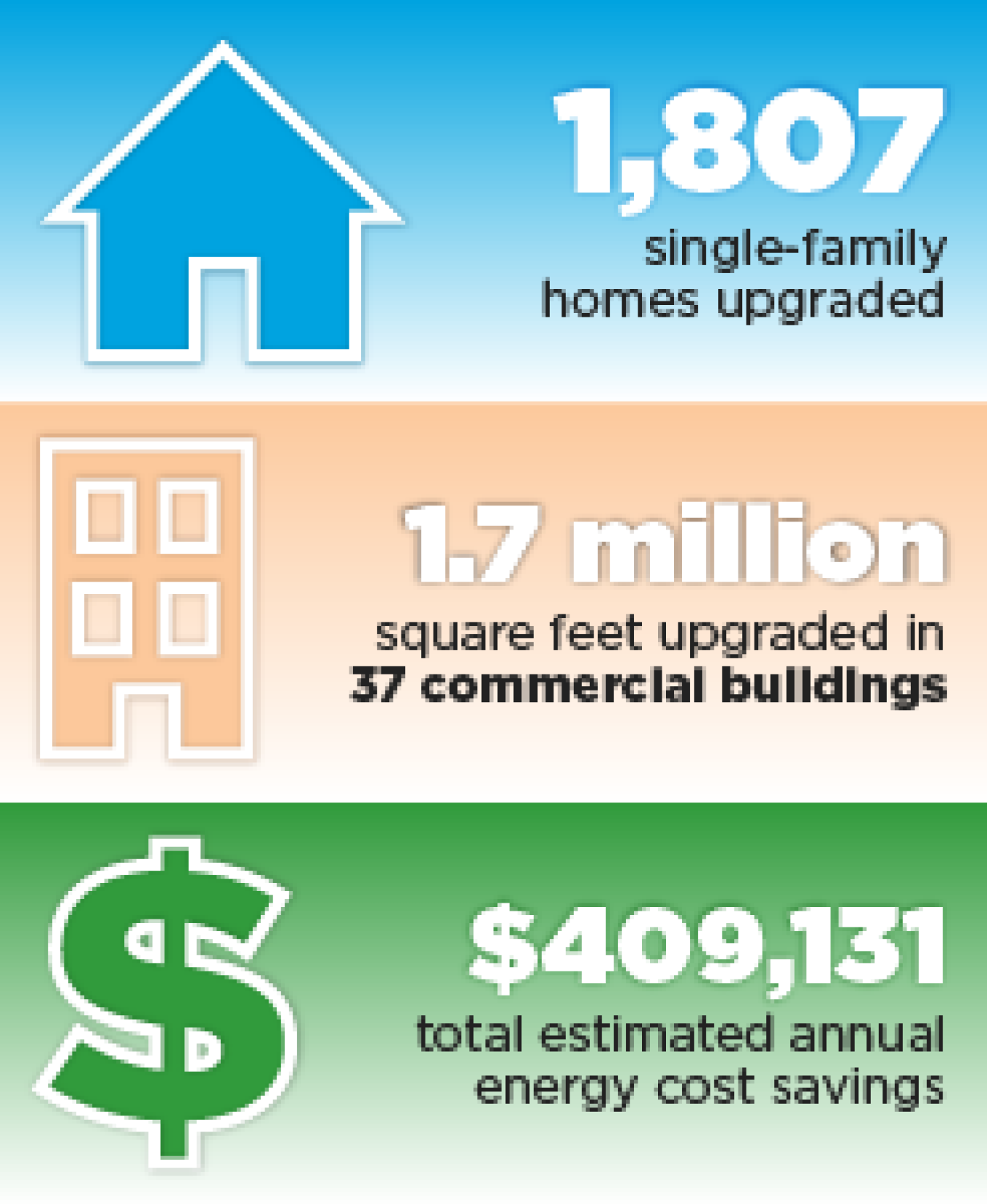
As a city that experiences seasonal spikes in energy demand and accompanying energy bills, San Antonio, Texas, wanted to help homeowners and businesses reduce their energy use and save on energy bills. The city partnered with CPS Energy, a municipally owned utility, to offer the CPS Energy Savers Program.
Using $10 million in seed funding from the U.S. Department of Energy’s Better Buildings Neighborhood Program, CPS Energy Savers focused on educating residential and commercial customers about the benefits of energy efficiency and motivating them to improve the energy efficiency of their homes and buildings. In addition to driving demand for energy upgrades with traditional marketing and incentive programs, the program offered training and certification opportunities to local contractors to help develop the local workforce.
Defining Characteristics
Approaches Taken
Key Takeaways
What’s Next?
Additional Resources
Defining Characteristics
DEFINING CHARACTERISTICS
CPS Energy Savers primarily focused on managing the demand for energy by both residential and commercial property owners. To get residents and business owners involved, the program worked to drive traffic to its website, which served as a program gateway. There, customers could complete a DIY self-evaluation of their homes or businesses’ energy use or learn more about getting a professional energy assessment at a significantly reduced cost.
To incentivize customers to implement the energy efficiency measures recommended by the online tool or through a professional, in-person assessment, the program offered rebates and loans. Customers were eligible for significant cash incentives if they achieved a 15% reduction in energy use through the upgrades they implemented. Workforce development was another key goal of the program; CPS Energy Savers offered training and certification opportunities to area contractors, who also helped promote the program offerings. Read more in the CPS Energy Savers final report.
Accomplishments
(July 2010 to September 2013)


Approaches Taken
The CPS Energy Savers program created a comprehensive website, provided customers with advice throughout the upgrade process, offered financial incentives, and worked with contractors to promote residential and commercial energy upgrades.
- Residential Program Design: Residents began the energy efficiency process with one of two home energy assessment options: a free online quiz to self-evaluate energy use, for which they received a $5 rebate on their next utility bill, or an in-home professional energy assessment for $25 (an estimated $200 market value). Next, homeowners could take advantage of attractive financial incentives to move forward with implementing upgrades recommended in the assessment. Throughout the process, participants had access to an “energy concierge,” who provided a one-stop shop for information and advice regarding the assessment, upgrade process, and available financing options.
- Marketing and Outreach: The program used many traditional marketing methods, including direct mail and television, newspaper, and radio advertising, to drive customers to the CPS Energy Savers website. The program partnered with contractors and retail establishments, including six Lowe’s stores, which advertised the CPS Energy Savers website and online assessment. Materials were also translated into Spanish in order to reach the city’s large Hispanic population.
- Financing: The program subsidized residential energy assessments and offered attractive financing options to enable homeowners to complete upgrades. CPS Energy Savers offered 750 $2,000 cash incentives to homeowners whose upgrades were estimated to reduce home energy use by at least 15%. In partnership with Energy Finance Solutions, the program offered loans up to $20,000 for 10 years with interest rates from 0% to 3.99%, depending on homeowners’ credit scores.
- Workforce Development: Using the program as an opportunity to grow the area’s green jobs sector, CPS Energy Savers provided training and certification, including Building Performance Institute and Residential Energy Services Network certifications, to local contractors. The program worked with the local Better Business Bureau to ensure that customers were connected with qualified contractors. Contractors were not only required to be registered and licensed with the City of San Antonio, but those providing air-flow services also needed to be approved by CPS Energy.
- Commercial Program Design: Commercial customers could receive significantly rebated energy assessments and building retro-commissioning, the systematic process that identifies low-cost operational and maintenance improvements in existing buildings. The retro-commissioning study was offered to program customers at 75% of the cost, and customers were fully reimbursed for the cost of the study if they implemented at least two of the recommended energy efficiency measures. Customers who participated in CPS Energy Savers also qualified for an additional 10% rebate on top of existing utility rebates.
- Municipal Facility Retrofit Program: In 2011, the city created a Municipal Facility Retrofit program for local government buildings. San Antonio’s Office of Sustainability invested in efficiency projects that resulted in savings, which it then used to create the Energy Efficiency Fund to finance further municipal projects. The city also created an Energy Management Division within the Office of Sustainability and approved the Energy Efficiency Fund as the financial mechanism to fund future energy-efficiency projects in the city’s municipal buildings.
Key Takeaways
CPS Energy Savers staff gleaned important lessons about residential and commercial energy efficiency programs, including:
- Consider how customers can achieve the efficiency target. Because some of the program’s financing options were only available to those that met the minimum 15% reduction in energy use, some customers needed to implement more costly energy efficiency measures to achieve that target. This reduced the likelihood that all customers would complete the upgrades. For greater customer participation, the program recommends evaluating how different customers can reach the same benchmark, then focusing on those that are more cost-effective.
- Communicate effectively with program partners. CPS Energy Savers found that effectively communicating with its partners led to greater success in achieving their mutual goals. CPS Energy Savers worked successfully with contractors and retail organizations.
- Utilize the local contractor network to drive demand. In order to promote its residential and commercial offerings, CPS Energy Savers worked with local contractors to act as program messengers and direct customers to its website.
- Provide easy tools to engage customers. The program incentivized customers to complete the self-assessment by offering them a $5 credit on their next utility bill. While not everyone who completed the tool necessarily implemented the recommended energy upgrades, CPS Energy Savers felt the tool was still a good way to engage people and help them better understand the program.
What's Next?
The City of San Antonio’s partnership with CPS Energy provided the CPS Energy Savers program with a path to sustainability. As the program continues, the city has undertaken additional energy efficiency initiatives:
- The program will now be funded through CPS Energy’s Save for Tomorrow Energy Plan (STEP), which will offer similar rebate programs.
- The CPS Energy Savers website transitioned to a portal for CPS Energy customers interested in energy efficiency and will continue to direct customers to the appropriate programs.
- Through upgrades and retro-commissioning of facilities participating in the Municipal Facility Retrofit program, the city expects to save approximately $535,000 a year, which will go into its Energy Efficiency Fund.
Additional Resources
Reports
Presentations & Stories
Videos
